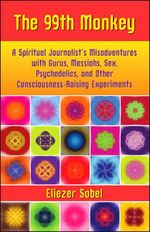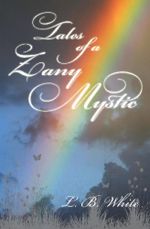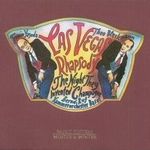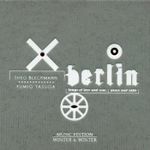By Ha! – Timothy J. Kelleher
I live in the hills of Tennessee country. I have lived in community here since 1993. I have been living with cancer since May. I love writing, being outdoors, music, dance and storytelling. I am 60 this year. I am a Radical Faerie!
MONDAY, OCTOBER 1, 2007
Shouldn’t We Know Better?
This is a difficult subject for me to bring up around here. It is the notion that people can take care of themselves and, if they can’t, then we will take care of them. After all, many of us share the idea of creating “sanctuary” for our family members. The tricky part comes when someone doesn’t fit in and needs help adjusting to the people or the place or the pace and vision of the community.
Over the years we have earned to be frank yet loving in the feedback we give each other. We have learned that harbored discomfort rots trust and hence involvement and disrupts the harmony of the household over time. More likely than not, we find ourselves holding back really helpful feedback, resulting in lower productivity, and yielding an unhealthy slant on rewarding good work with verbal praise, gold stars and jolly good report cards home. Wrong!
Feedback is important from one’s first day to one’s last. I want to know when I am doing the right things, that I am engaged in the activities of the community, that I am appreciated whether having been here one day or many years. One would like to know that what they have to say is as important as what even the longest-term member of the household may have to say. Hearing how people speak to one another and how people respond could, in many cases, be more important than the issues of the day. Important because it demonstrates how people like to be spoken to. Some people want info in bullets points (“What’s the bottom line?”). Some want their sense of security stroked before they will listen or take an active role (“What will happen to my efforts so far?” or “How will this affect how we do things now?”).
Many want to know “what’s in it for me?” and many more want to be certain that everyone will benefit from a change of direction or plans. A lot is learned from listening to people express themselves. Far better than the ostrich with its head in the sand – a safe place for sure – we can pretend we don’t care and no one will even notice.
But wait! My point here is that the right questions and a non-judgmental point of view will result in a willingness to be there for every single member of the community. From such a point of view one may find how best to help a fellow communard whose difficulties fitting in are emotion-based and need special attention. We know how to do all these things. My fear is that we don’t we don’t do them.That we don’t take the time to listen to others speak, that we could have faerie godmothers assign to each new person for that particular purpose – to listen and share. It has often been said that we are simply a bunch of well-meaning folks, living in the woods, who have no idea how to help the psychologically troubled. Sad statement, that. How is it that upwards of 75 people have no people skills rudimentary enough to at least foresee potential difficulties for that person or for the community. Then, by watching and listening, can provide valuable feedback to the newest and the oldest members.
The communally new, the newest arrivals to the household, are denied hearing what the invisible say, of seeing how they contribute, of watching them coach and share skills with others. When I remain invisible I am holding back all those things, things both practical and abstract, which the newer members are so eager to learn and know. After all, part of our work here is to create an environment for personal growth – not of wandering around bumping into great piles of gleaming enlightenment. We are queer folk and we have only each other as models. Pray the goddess I don’t have to account for what I have failed to share with others, for those people I have left standing on the roadside because I couldn’t bring myself to open up and share.
My best “kick in the pants” philosophy for situations like this is: “How will what I do today impact our way of life twenty-five years from now.” Technology defies our wildest dreams already, to say nothing of our nerves. The world food situation, the water crisis, and world domination issues will drive change into the society like wringing a chicken’s neck or knocking your crazy bone. I prefer the latter. Now I simply need to walk my talk! Riiiight!
SATURDAY, SEPTEMBER 29, 2007
Pet Power
I am watching our pets in the five acre front yard of our country cabin. They have only started to rouse themselves into that much talked-about “pack” that lives behind Round Hill (the natural marker for the land we call “Peckerwood”.) A pure white Japanese Spitz and a calico Shepherd-Pitbull-mutt mix respond to their names, Priscilla and Babes respectively, and were abandoned on the roadside a year apart, and wandered to the “promised land”, remaining ever since. To call them a pack is really inaccurate unless I include our cat, Black Betty, in the mix. Being all neutered females, this collection of animal power certainly outranks our personal power, with Betty in the lead and with Babes bumbling about, helter-skelter through the woods, the creek and the smattering of old out-buildings around the place.
These three creatures, Betty, Priscilla and Babes, consider themselves, I think, “Rulers of the Universe”. Priscilla holds her own as canine duchess of the land. Black Betty is the Ambassador for World Relations and the Survival of the Feline Comrades (AWRSFC for short). Through her all group reactions are signaled. Through her the level of volume control is set. Barks, yelps and oddly distress-like screams that certain calico and white dogs exhibit when excited are curtailed when Betty gives the signal. The only thing to halt Black Betty’s hunting instincts is dog food. When she wants action, she gets it. When Priscilla and Babes get fed, life on the farm comes to a stand still. Betty returns to her rocking chair with the paper bag seat. She waits. They eat. She’s looking at me with that “how dumb does one have to be to eat!” look in her eye. What can I say? After all these years I catch only some of her kitty chat. “What!?!?” I ask perplexed. That cold stare blanks may face and my smile tilts down a bit and my eyebrows go up. The dogs crunch away on dry bits of god-knows-what tinted green sawdust. And they are healthy. They are smart. They are dogs.
I love our animals. They are champion companions, comforting us headstrong humans with their earthly wisdom and bright barks. They make me laugh, worry, cuddle, and gag at their body fragrance. My kitty, Black Betty, hugs the ground I walk on, weeps to get outside only to weep to get back inside. She is so far left of cynical she is off the chart. She takes her role as companion and caregiver in that uniquely cat-like manner – curling into a cuddle, purring for reassurance, and kneading my underarm as if to message my trouble away. Sweet creature. Little friend.
Being intrepid, having boundless energy, rambunctious affection, and even tireless devotion – all these characteristics enlighten my life and make me smile my troubles away. Woof, woof! Meow, meow!
FRIDAY, SEPTEMBER 28, 2007
Don’t Ya Love It?
I get up early these days, usually to write this blog, but often to sit quietly thinking of the day ahead. And sometimes there are surprises to encounter in the post-wee hours of the day. The dogs drag odd parts and pieces of assorted vermin. The cat often is “hanging from the door jam” of the front door trying to get in the house to feed. And the morning holds indescribable celestial beauty; the clouds often like huge seafaring galleons with puffy, white sails. Birds rehearse for the neighborhood chorus, establishing range and chirp-strength. What a sound, huh? A sound that wraps my day and introduces the night.
And yet, even with the peaceful, perfect morning, nothing brings a greater brightness to me and my day as when, during this morning revere, a neighbor stops to visit. Today, our nearest neighbor around 7:15AM visited me. With the morning mist still silencing the chitter and chatter of the night, we sat to sip hot tea and coffee on the porch. We have been friends for a good many years, and through it all we have spent time sharing concerns, fears and inhibitions. Now, as things move towards the richest part of our time alive, my friend has been funny and bright, smooth and yet on the edge, finding the fall days to breathe in the coming winter. We list our “to do’s”. We laugh over plans well-made, or poorly conceived or even more whacked than the effort the year before. We commiserate over lost loved ones, new faves and new bores enjoying good laughs, sad notes, and of course, the inexplicable wonders of our lives.
The dawn stretches across acres of late-green grasses hurrying to breathe the sunlight washing tide-like from the eastern skies. In this distance the sound of friends laughing lasers through the morning air. The bounding and barking of our dogs, deep in the forest above and behind us or down lapping creek water we’d never think to drink, distracts even the bird choir overhead. In fact, the dawn has become day and my friend departs. “I think it’s March again… Better get out the kites!” she shouts from her car window. “Yeah, and my hip boots, too!” I hollered back knowing she’d not hear. It doesn’t matter. What matters is that we talked and shared a beautiful daybreak and the launching of a whole new bunch of wonders.
TUESDAY, SEPTEMBER 25, 2007
WALK WITH ME
I have lived in Middle Tennessee for fifteen years. Rural living (extra primitive, if you will) with upwards of seventy-five people, upwards of six households, goats, chickens, cows, and of course, seasonal preparations. Over this long period of communal endeavors I have learned almost more than I’ve ever wanted. I have learned about myself, my relationship with my special friends, and my ongoing relationship with my extended “family”. Such simple notions for one living in community has its rewards (friendship, confidant and partnership).
The strongest pull to community is friendship. It reaches out into the world at large, becoming a source for inspiration and dreaming. My relationships with my special friends are nurtured by this dream, by this inspiration. And the large extended community is often propelled by a sense of shared vision, personal involvement and a high sense of engagement on everyone’s part. Together, these three important notions come to life. Together, these are three levels of growth (and three levels of disillusion for those who don’t make it) can energize all folks involved toward a productive, harmonious and alternative way of living.
Now, I no longer live “in community” but have moved into a time in my life when I need daily care. I am no longer able to participate in community-wide activities. I am, however, always available for conversations both personal and communal. I look to this task with eagerness and relief. Eager in wanting to share what I know, and relieved because I am in the company of wildly excitable people wanting to make a difference. Communal living offers a good deal more than meets the eye. Rural living brings out the clever, the witty, and the ribald in just about everyone. I want to share what I know. I want to talk my dreams – how else do we bring out our true selves – and to share my hopes with all who pass my way.
Monday, September 24, 2007
With Death As My Witness
I heard an intriguing observation on the radio yesterday made by a cancer survivor. A simple observation, a “note”, really, a note meant to make one stop and think. “Stagger and think,” actually, at how basic and rudimentary the notion appears on the surface. In actuality I was brought to tears.
In the battle between health and well-being there are two combatants. I am one player. Death is the other. We both have the same objective. To kill the other. My agenda is full with one item only: to rid my life of this cancer. Put in other terms, one of us is going to get “there” first, reach the goal, make the pitch, and left be standing at the end. Both Death and I want the same thing; have the same hope, and the same conquering superpowers. How could I know I had such strength, such power. Least of all do I feel up to facing off with “the other side”. If anything I am trepidatious of my perseverance.
Death has as much power as I give it. It takes without asking, no differently than I take steps to over-throw it. It is no more flexible nor adaptable than I. Plus, I can still call my future, in small ways, and work to build more defenses day-to-day. Death can only kill. I can only suffer that consequence once I stop helping myself grow what little life there might be ahead. No matter. If I can’t win, I’ll go down with peace, love, and hope. Besides that, anger and denial get me nowhere. Walking my dreams, living my hopes and sharing my fears. Therein lies the life, therein lies the battle. May the strongest soul win!
Thursday, September 20, 2007
For Whom The Bell Tolls
Moving through the process of bodily demise, several stages of emotional mah-jongg have fallen across my path. All stages of denial, all stages of anger, sadness, and fear have swept over me recently. The early fall season bundles the warmth and sunlight we dream for through the dead of both winter and summer. This year there is the added dimension of it all coming to an end before I see spring. How do you deal with such a reality? How does one escape the feeling of loss, the feeling of helplessness, the feeling of grief over what has yet to be and at the same time to preserve one’s dignity and sense of outreach to others.
Youth and vitality, the life force of today’s society, run rampant over my slow and cumbersome gait. Age and agility are, for the first time, engaged in a small battle for my heart. Yet it is through these tiny encounters that I can find the strength and the courage to continue into the next moment of the day.
Going forward I can find what’s going on with my body, and though I have little to say about it, I can live up to the moment, then plug my nose and jump. The water’s a little cold, but isn’t the sunshine fabulous?
Blessed Be!
TUESDAY, SEPTEMBER 11, 2007
Sunday, September 9, 2007
Wishin’ I felt better today.
I’ve spent a good deal of last the 48 hours feeling queasy and very sleepy. This is rather unexpected considering; in general, I manage to maintain a fairly good grip on my discomfort. However, recently I’ve gone back on the kemo drugs, the ammonia drugs, and the diuretics, and so on. As a result my guts are set to spinnin’, the queasy feeling in my stomach, and the small (but injurious) headaches popping about my consciousness make for slow and tiresome days.
To make matters worse the temperature has been in the high ninety’s – the humidity in a race to one hundred degrees – at least! Keeping oneself horizontal for as long as possible each day. Close to the floor. Like some draft-seeking, slug-like anthropoid. Whew! Being in cancer therapy does have its upside. The people I run into each week at the oncology lab are friendly, outreaching, and often in a good deal of pain. I can hardly relate by comparison. And the people that come every day to help me get along; how sweet they are.
So the people are beautiful, the weather, eh, could be better, but we and the late summer corn is delicious as are the tomatoes and much, much more. Around here preparations are being made for the annual fall Gathering in the wood. Some 200 people will come for 10 days of camping, eating, and whatever. Takes a little planning, but the folks that do it…do it well. I might make an appearance but only for the talent show and a meal or two. I get overwhelmed by big groups of people. That’s not surprising.
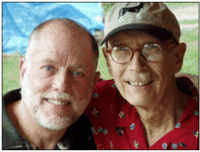
Editor’s Note:
Ha! aka Tim Kelleher, was my oldest friend in the Gay community, being the first Gay man I met when I came out and moved to San Francisco in 1971. He died on February 24, 2008 — surrounded by his friends and community — of complications of hepatitis C and liver cancer. Before he died, he and I spent a beautiful week together. He organized parties to celebrate the people in his life he loved and we sat and looked at pictures of our friendship. This article is gleaned from his blog maintained over the last months of his wonderful life. My life and my community are immeasurably poorer for his loss. – Bo Young
This is just an excerpt from this issue of White Crane. We are a reader-supported journal and need you to subscribe to keep this conversation going. So to read more from this wonderful issue SUBSCRIBE to White Crane. Thanks!
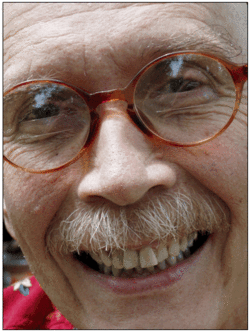

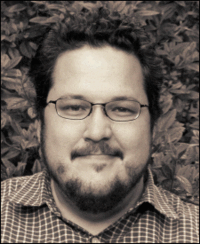
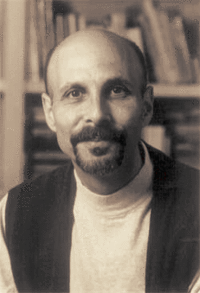 Community Trust
Community Trust